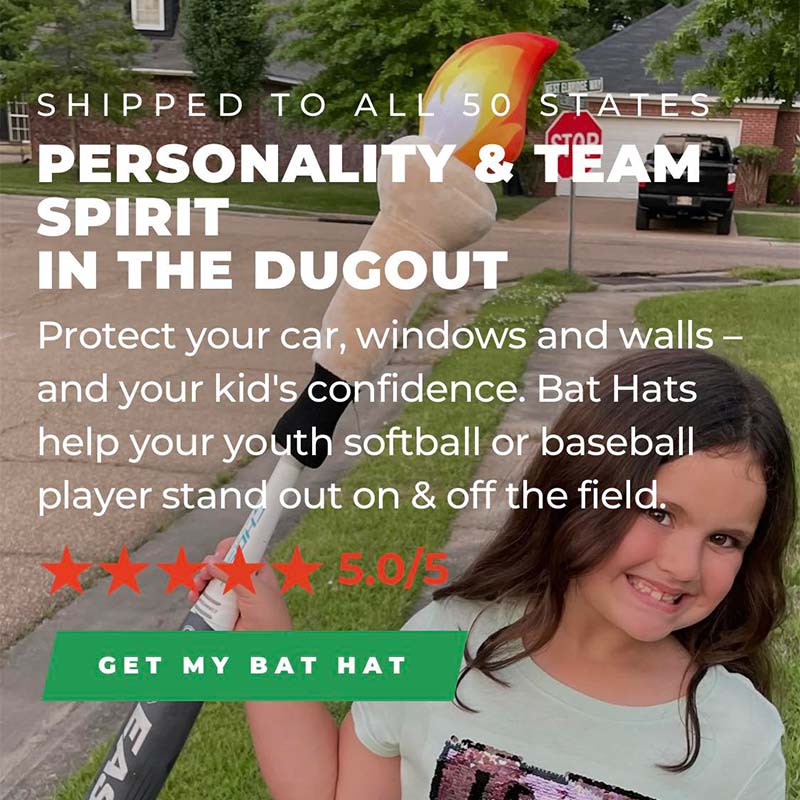Fastpitch Injuries – Keeping Our Daughters Safe
Every day, we hear about another softball player injured. Nearly every one of us has witnessed at least once, a girl being carried off the field, or ambulanced away from a game due to an injury. And if you have ever witnessed the harsh realities of blood and trauma that occurs when a player is hit in the face, it will be something that you NEVER forget.
 According to the CDC, Each year, more than 125,000 baseball and softball players under age 15 are injured badly enough to seek treatment in hospital emergency departments.
According to the CDC, Each year, more than 125,000 baseball and softball players under age 15 are injured badly enough to seek treatment in hospital emergency departments.
Some players experience injuries debilitating enough that they are unable to continue playing, while others endure the bumps, bruises and fractures that time will heal.
There are also an increasingly amount of head injuries being reported with softball that result from player collisions (often at home plate) as well as from unfortunate accidents where players are hit in the head with a ball. These injuries speak little of the muscular overuse injuries that many girls are experiencing at extremely young ages due to rigorous training and practice schedules.
Truth is, there is nothing soft about softball.
And with the advancements in the bats, and the extreme development of players the game is getting more and more dangerous. Today’s bats are designed with materials that literally act like a trampoline, that some experts believe multiplies the force and speed of a batted ball beyond what was once humanly possible. Translated, this can mean that mean that aside from bad hops, line drives are moving so quickly that even the most responsive, most experienced infielders can be taken off guard.
There is also an amazing transformation that occurs when girls take the field that seems to loudly question the adage that boys are rougher or more aggressive than girls are. Girls too, are aggressive players – and with emotions running high and adrenaline raging during games, injuries are often the accidental aftermath.
Unfortunately, there will be fastpitch injuries and mishaps, and there will be accidents. Broken ankles, and twisted knees, collisions, pinched and broken fingers, and concussions – even for the most protected players will always be part of the game. But there are some things that parents and coaches can mandate in order to help keep the players as safe as possible.
1. Facemasks for all infielders. There are a lot of people who see facemasks as a weakness or an indication that the player is afraid of the ball. To that we say HOGWASH! The earlier your child learns to adjust to a facemask and can wear one while playing the better they will be in the long run. Todays facemasks protect their noses, teeth, jawbones, eyes, and foreheads – and can be the difference between a bruise and a concussion. Even though they are not mandatory in popular sanctions (we assume they will be one day soon) coaches and parents should ensure their daughters and players (ESPECIALLY PITCHERS AND 3RD) wear them.
2. Proper batting helmets with chin straps and facemasks. There is no way for a batter to protect themselves from a foul tip off of a bat while batting. They wont even see it coming. And yet, we see tons of girls – even inexperienced and young hitters, batting in a helmet without a facemask. The reality is that your daughter/player could be KILLED by a foul tipped ball that hits them in the face, or suffer lifelong debilitating injuries. Allocate your money on proper fitting head-gear with facemasks and CHINSTRAPS!
3. PITCHERS! In older age groups, we see fewer and fewer pitchers wearing facemasks. Ironically, in these older age groups, the hitters are better – and using $300 weapons that can break bones before a pitcher even has the time to react. No matter how good you are, no matter how old a pitcher is – a line drive coming right back at you at speeds of over 100mph, can kill you or tragically end your career. Wearing protective underclothing with a heart guard is also recommended. Remember, you can go 300 games without every being hit. But it only takes ONE HIT taken to the face, heart, or clavicle to understand the importance of this protective gear. I don’t know about you, but my daughters and my players lives are too important to NOT think about protection. Consider that by the time a pitcher comes out of her windup and before she has time to regain her balance, the ball is already being hit towards her.
Ask yourself this. Would you allow your daughter to drive around without a seatbelt, just because you (or she) has never been in an accident before?
4. Metal cleats. Most sanctions only allow them 14U and above. For pitchers, metal cleats can lead to career ending knee injuries as the cleats are more prone to getting caught on the rubber. Additionally, with metal cleats the risk of slashing open another players leg during a slide or play at the bag, – or having your player/daughters leg or face slashed open are increased twenty fold. Incidentally, many people believe (and rightfully so) that metal cleats give more traction especially in hard dirt and in the outfield, but they can also lead to more lower leg injuries as they can get caught when base running. Today’s molded cleats may not ‘sound’ as cool on concrete, but they are certainly effective enough for the softball field.
5. Coaches should make sure girls are prepared to play their position in competitive venues. Safety comes with a certain amount of comfort in a position. The time to learn and play in new positions is in practice until a player is developmentally ready. Additionally, coaches need to talk to their players about making safe plays, especially when blocking bags while making a sliding play.
Also, as a coach and parent – spend time, especially with younger players teaching them proper glove work, catching and throwing mechanics! This can help to resolve many injuries in young players. Make sure that as a coach you take safety measures during practice as well, so that they become second nature.
6. Stretching! Stretching should be mandatory before practices and games. stretching warms up the muscles and helps to prevent muscle injuries. Additionally, pitchers should be properly warmed up before throwing so their mechanics are right, and coaches and parents need to keep up with pitch counts to make sure their daughters aren’t throwing too much. In leagues with no pitch counts, many teams will have a pitching horse who pitches 5 – 10 games in a weekend without a break. Even if this isn’t hurting her right now, it could lead to nerve damage and muscular overuse injuries in the future.
7. Make sure the fields you play on use break-away bases. Sliding into the base causes more than 70 percent of recreational softball injuries, and experts believe break away bases can eliminate more than half of these injuries.
8. Make sure catchers are outfitted in properly fitting gear that meets the NOSCOE standards. Catching gear is expensive, but the more coverage the catcher has the better. Also, when making plays at home, coaches need to spend time perfecting the block so that they can avoid what can be dangerous collisions.
9. Coaches and parents need to evaluate their injured players and PUT THEIR NEEDS FIRST!! Most of the time when a player is hurt, they come off the field and as soon as they regain their bearings are ready to go back. If the player is inured, especially by a blow to the head, neck or spine – HAVE THEM SIT OUT and SEEK MEDICAL ATTENTION. Spinal and brain injuries are tricky – and concussions can go unnoticed for several days. The sooner treatment is sought the better.
10. Hydrate! Coaches, parents and players should make sure that all members of the team are staying hydrated throughout the day. Dehydration is an extremely common problem, especially in the hot summer months, that can lead to illness at the ball field.
11. THIS IS A BIG ONE!!!! If you are a spectator, or have small children running around – PLEASE pay attention. We have personally seen far too many bystanders badly injured by foul balls. When you hear HEADS UP, take cover —– and make sure the little ones are playing in a safe area.
Certainly some injuries are par for the course. Complete accidents. What parents and players need to realize however is that our pitchers are getting better and better, our bats more fierce, our hitters tougher and the game is CHANGING! The biggest mistake any player, coach or parent can make is to think that their daughter is ‘so good and confident’ that they don’t need protection.
1 Comments
Leave a Comment
You must be logged in to post a comment.
get sifg in your inbox
Receive occasional updates about sales, new products, coupon codes, and more!







[…] http://www.sifg2021clone3.flywheelsites.com/2013/11/24/fastpitch-injuries-keeping-daughters-safe/ […]